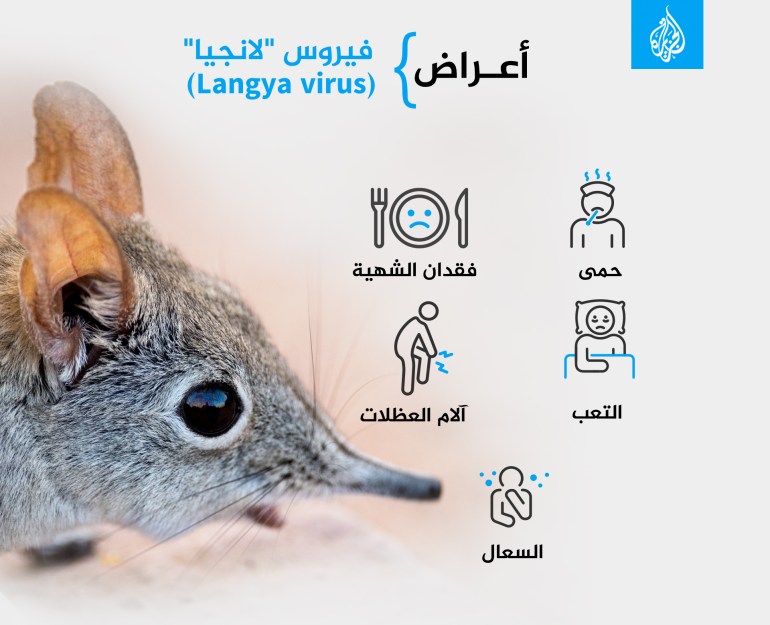Researchers have begun tracking a new virus discovered in China, which has infected dozens of people so far, so what is this virus?
And what are its symptoms?
Does it cause death?
What is the name of the new virus?
The virus is called "The novel Langya henipavirus" LayV, and it is believed to have spread from animals to humans, according to the British newspaper, The Guardian.
When was the Langea hanniba virus discovered?
Langia henipa virus was first detected in the northeastern provinces of Shandong and Henan in late 2018, but was officially recognized by scientists only last week.
Last week, scientists from China, Singapore and Australia published correspondence about the virus in the New England Journal of Medicine (NEJM).
Scientists said that the virus was most likely transmitted from animals to humans.
The Taiwan Health Authority is now monitoring its spread in the country.
The researchers tested wild animals for the Langia hanniba virus, and found viral RNA in:
More than a quarter of 262 shrews, which may indicate that shrews may be a natural reservoir for the virus
2% of domestic goats
5% of dogs
Symptoms of the Langia virus
Fever
exhaustion
Cough
Anorexia
muscle pain
The scientists said that all the infected people had a fever.
The virus was the only possible pathogen found in 26 out of 35 people, suggesting that Langia virus was the cause of the fever.
Does Langia virus cause death?
So far, there have been no deaths from the Langia virus.
Is Langia virus transmitted between humans directly?
The researchers said it is still not clear if the virus can be transmitted between people;
Most of the 35 cases were in farmers, and among the other infected individuals were factory workers.
The researchers found that tracing contacts of 9 patients, in addition to 15 members of their families, did not reveal the absence of close contact between family members, but the sample size was too small to determine the case of human-to-human transmission.
What shrews are believed to be the natural reservoir of Langia virus?
Shrews are small mammals with cylindrical bodies, short, slender limbs, fingers, and claws.
Its eyes are small but usually visible in its fur, and its ears are round and fairly large in size.
Most shrews are active throughout the year, day and night, with regular rest periods.
They eat primarily insects and other invertebrates, and may also eat small vertebrates, seeds, and fungi.
What family of Henipa virus does the Langea virus belong to?
Henipa viruses are a class of zoonotic RNA viruses that also include Hendra and Nipah viruses.
Both Hendra virus (which affects horses and humans and originated in Australia) and Nipah virus (which caused disease outbreaks in Southeast Asia) have been associated with high mortality rates.
The US Centers for Disease Control and Prevention (CDC) says that of the 5 identified HNiPA viruses, Hendra and Nipah viruses are highly virulent emerging pathogens that cause outbreaks in humans and are associated with high rates of mortality.
There are 3 additional types: Cedar virus, Ghanaian bat virus, and Mojiang virus, which are not known to cause human disease.
The incubation period for Henipa viruses ranges from 5 to 16 days (rarely up to 2 months).
Hendra and Nipah virus infections can cause severe flu-like illness with fever, muscle pain, headache, and dizziness.
This may progress to acute encephalitis with confusion, abnormal reactions, seizures, and coma;
Symptoms of respiratory disease may also be present.
Relapsing or late-onset encephalitis can develop months or years after acute illness.
The case fatality rate for Hendra virus infection is 57% (of the 7 known human cases, 4 were fatal).
Case fatality rates for Nipah virus infection are 40% to 70%, but have been 100% in some human outbreaks.
Henipa virus treatment
There is no specific antiviral treatment for hnipa virus infection;
Treatment consists of supportive care and management of complications.
While the antiviral drug ribavirin has shown efficacy in the laboratory, its clinical benefit is unknown.

